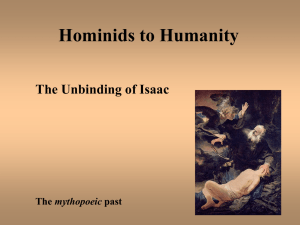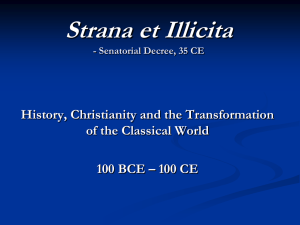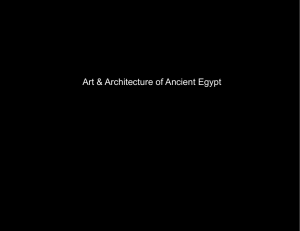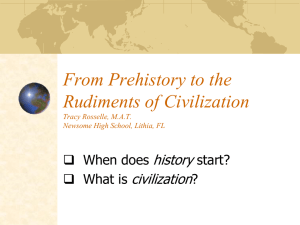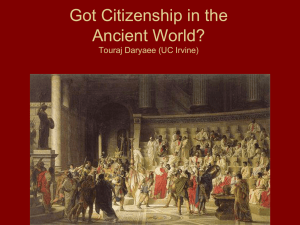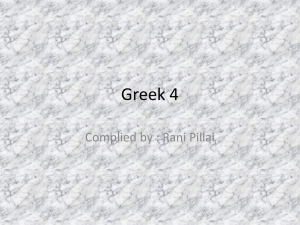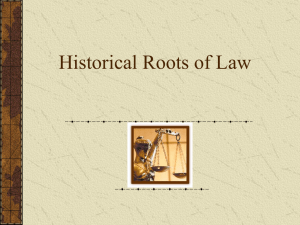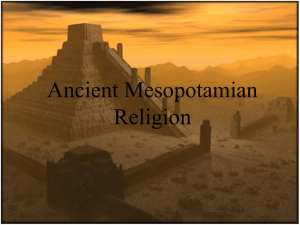Egyptian Art
advertisement
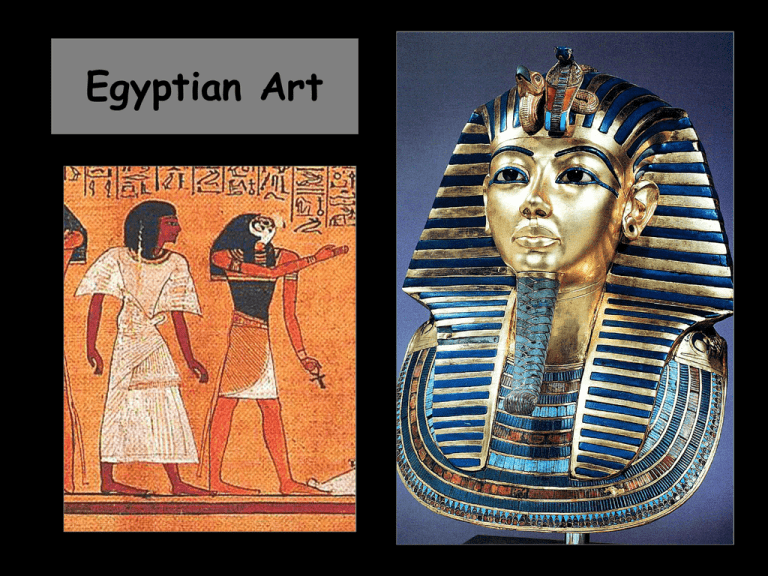
Egyptian Art Ancient EGYPT: Gift of the Nile The Palette of King Narmer, c. 3100-3000 BCE, slate Early Dynastic –3100 BCE Palette of Narmer Old Kingdom— 2700 – 2200 BCE Step Pyramid of Djosher Pyramids of Giza Sphinx Statue of Menkaure and Queen Seated Scribe (Kai?) Ti Watching Hippo Hunt Middle Kingdom - 2000 unification of Lower and Upper Egypt/ hierarchical proportion/ Horus (a human-armed falcon), Seth, Osiris, and Isis other representations of the king/ Hathor/ ceremonial use of a utilitarian object Attention to Appearance The Creation of the Heaven and the Earth, Book of the Dead of Nesitanebtasheru, c. 1025 BCE Egyptian Gods Imhotep. The Stepped Pyramid of King Djoser (Zoser), c. 26752625 BCE, Saqqara King Djosher False Door Top: Ba bird from the Valley of the Kings, tomb of Tutankhamun, c. 1325 BCE Bottom:Scarab pendant from the Valley of the Kings, tomb of Tutankhamun, c. 1325 BCE Egyptian gylphs symbolizing (left to right) life (the ankh), stability (the djed pillar), beauty, joy, and protection the ka and the ba/ mummification and canopic jars/ scarabs and other amulets mastaba and serdab/ necropolis/ stepped pyramid first known instance of using columns in recorded history- Imhotep/ sed rituals and the priesthood The Great Pyramids at Gizeh, 2600=2475 BCE ben-ben (compare with ziggurat)/ Khufu, Khafre, and Menkaure/ Re/ celestial orientation theories on the construction/ tiny interior spaces Seated statue of Hemiunu (Gizeh) c. 2580 BCE, painted limestone The Great Sphinx (Gizeh), c. 2575-2525 BCE, sandstone image of absolute kingship/ eternal guardian (tutelary)/ association of the nose with the life force Khafre (Gizeh), c. 2575-2525 BCE, diorite permanence of material/ intertwined lotus and papyrus/ Old Kingdom kilt/ canon of ideal proportions/ “block-like” characteristics/ subtractive method of carving Menkaure and Khamerernebty (Gizeh), c. 2490-2472 BCE, slate Triad of Menkaure with the goddess Hathor and the personifcation of the 7th Upper Egyptian nome (Gizeh), c. 2460 BCE, slate Left: Bust of the vizier Ankh-haf (Gizeh), c. 2500 BCE, painted limestone Right: Prince Rahotep and his wife Nofret (Maidum), c. 2570 BCE, painted limestone Seated scribe (Saqqara), c.24502350 BCE, painted limestone use of increased realism in subordinate figures/ accounts by Herodotus Ka-Aper (Saqqara), c. 2450-2350 BCE, wood The Rosetta Stone, 196 BCE, basalt Relief of Hesire (Saqqara), c. 2675-2625 BCE, wood hieroglyphics and the Rosetta Stone/ Jean-Francois Champollion/ conceptual vs. optical approach/ twisting perspective and the use of a grid Ti Watching a Hippopotamus hunt, relief in the mastaba of Ti (Saqqara), c. 2450-2350 BCE, painted limestone False door from the tomb of Iyka (Saqqara) c. 2450 BCE, wood Rock cut Tombs (Beni Hasan), c. 2000-1900 BCE constant threats to power greater focus of interior of tombs/ sarcophagi/ fluted columns and a portico Left: Relief depicting Amun receiving Sesostris I Right: The “White Chapel” of Sesostris I (Karnak), c. 1925 BCE, limestone (where the relief is found) Senwosret I led Senwosret I led by Atum to Amun-Re in the White Chapel at Karnak, Thebes, c.1930 BCE, limestone Why is there a PREDYNASTIC and an EARLY DYNASTIC period to Egyptian History, instead of just Old, Middle & New? Why is the southern part of Egypt referred to as "Upper Egypt", and vice versa? Who was Imhotep, and what made him so special? Explain the similarities and differences between the ziggurat of Saqqara versus those in Mesopotamia. How did the Egyptians' belief in afterlife affect the creation of the pyramids? Egyptian architectural history seems preoccupied with tombs and burial. What are the chief concerns of Mesopotamian architecture? Looking at the statues of Khafra and Menkaure, describe what the ideal Old Kingdom Ruler should look like. What made Amenhotep IV's (New Dynasty) religion so different than anything before it?
